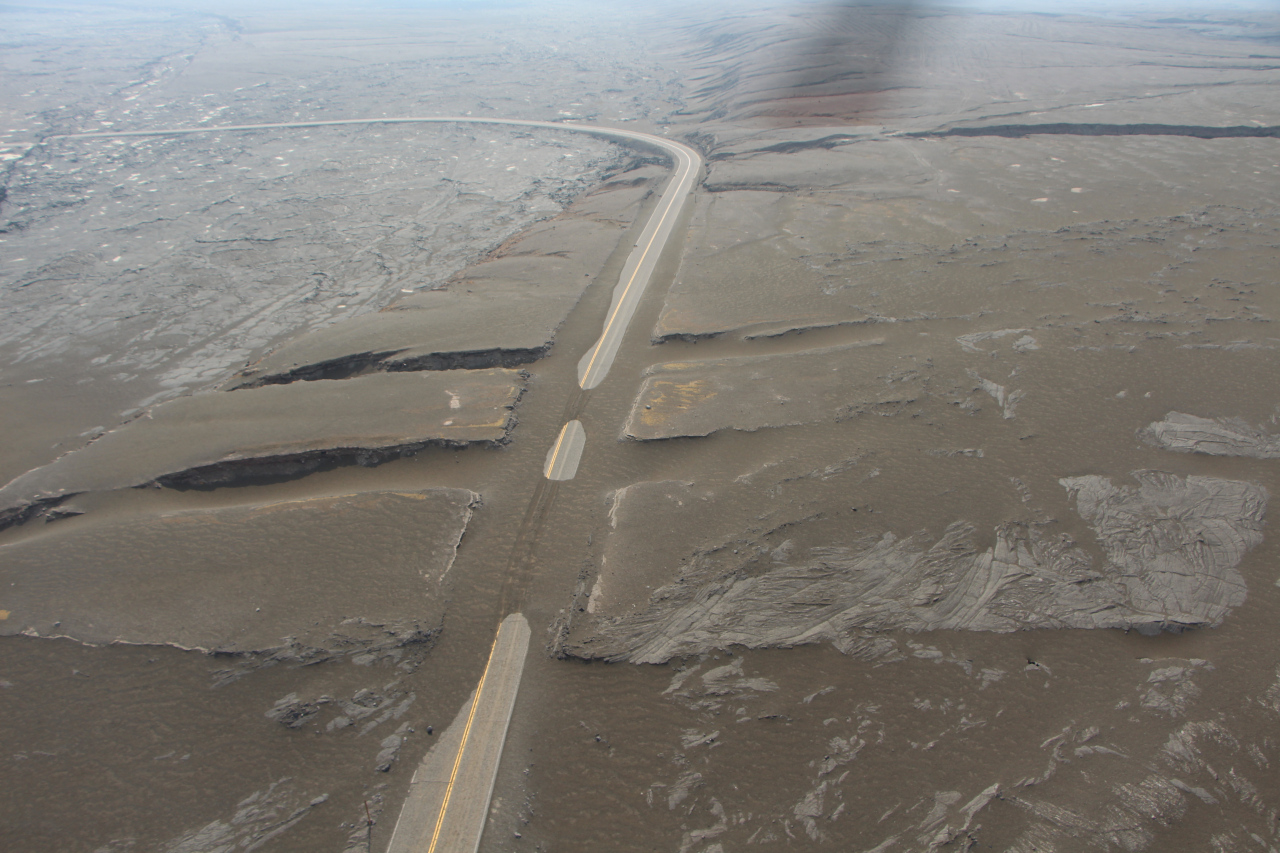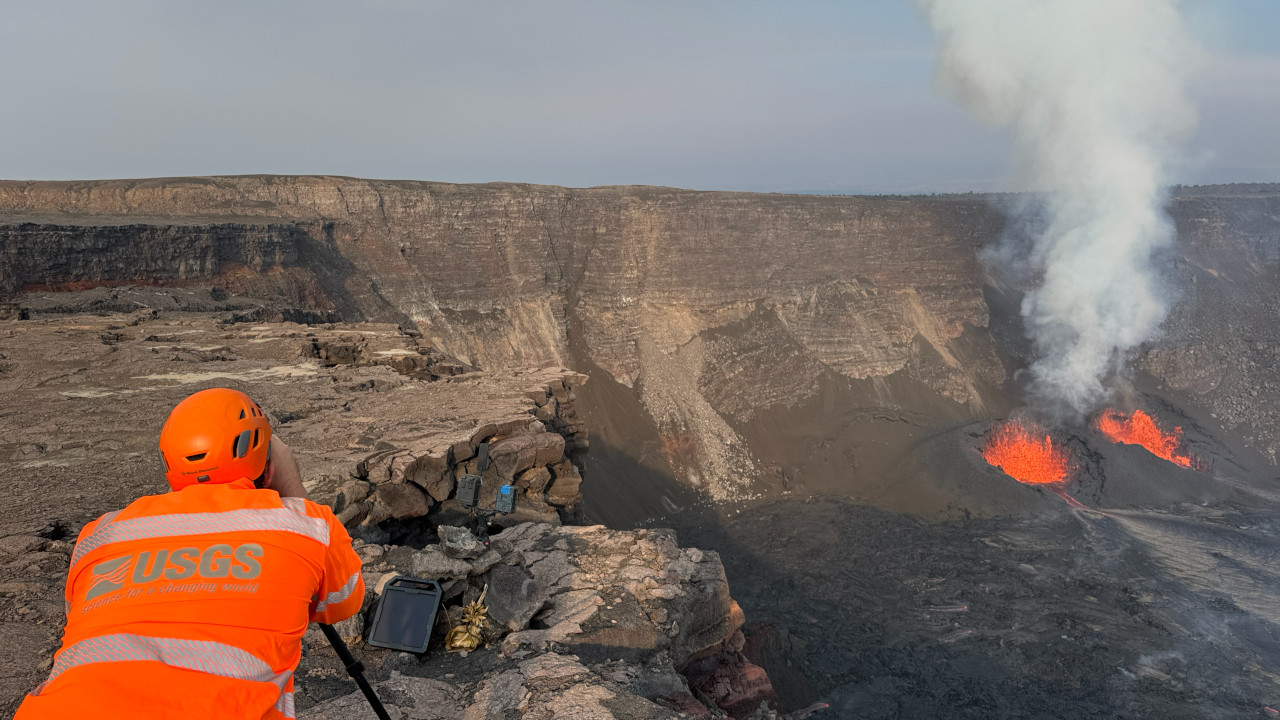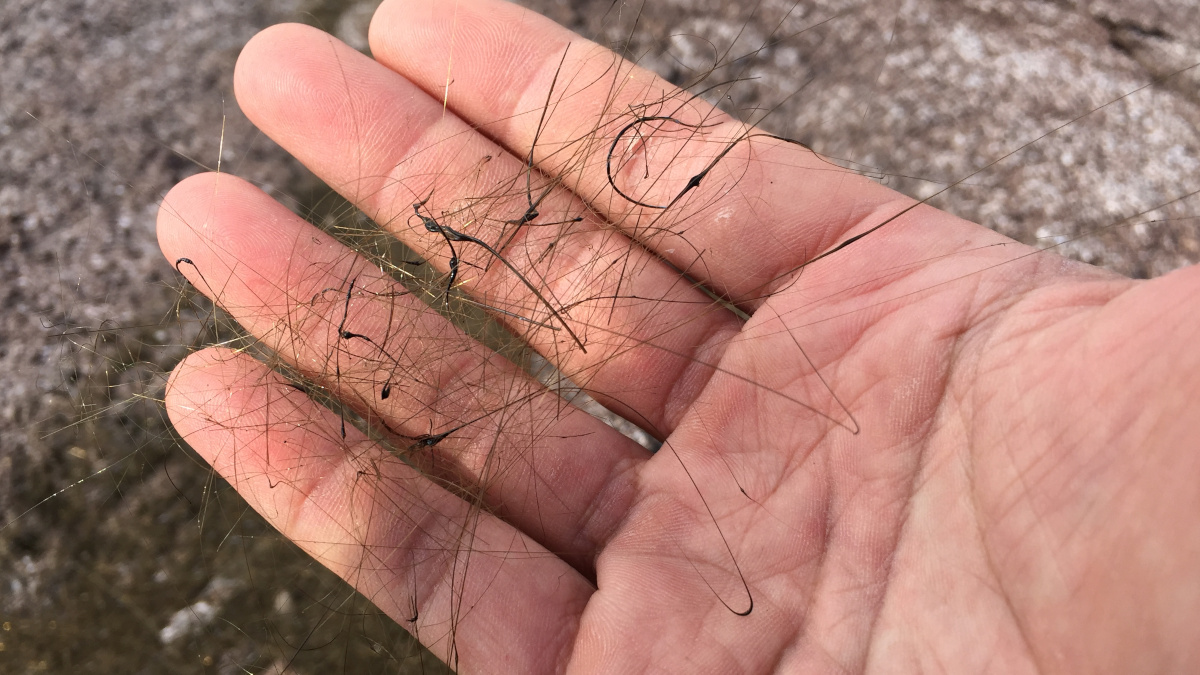A synthesized text-to-video voiceover was used in the narration for this story. All images and video are courtesy the U.S. Geological Survey. Story includes an official Hawaii County Civil Defense message.
(BIVN) – The eruption at the summit of Kīlauea continues, and on Friday officials issued an alert concerning Pele’s hair, which has been reported within the National Park and in nearby communities.
The USGS Volcano Alert Level for Kīlauea remains at WATCH, with all eruptive activity confined to the summit caldera within Hawaiʻi Volcanoes National Park.
However, “persistent fountaining coupled with Kona winds has resulted in Pele’s hair reported in some public areas within the National Park and in nearby communities,” the USGS Hawaiian Volcano Observatory noted in its daily update.
Pele’s hair is known to island residents as the strands of volcanic glass produced during eruptions that can sometimes be carried by the wind into the surrounding communities.
The USGS update was followed by a Hawaiʻi County Civil Defense message, alerting residents to the Pele’s hair and voggy conditions.
If your area is experiencing these conditions, Civil Defense advised:
- Contact with Pele’s Hair can cause skin and eye irritation.
- Avoid exposure by wearing long sleeves and pants and by staying indoors.
- If you are sensitive to vog, stay indoors or consider leaving the area until conditions improve.
From today’s USGS HVO update:
Summit Eruption Observations: The summit eruption at Kīlauea volcano that began on December 23 entered its fourth eruptive episode (Episode 4) the morning of January 15, and continues. Activity is concentrated at two lava fountains in southwest Kaluapele that have each built up a cone and have associated lava flows. As of this morning, both cones are 30 to 35 meters tall (100 to 115 feet), and field crews report that the current fountaining is generally the height of the cones, with occasional fountaining to 40 to 45 meters (130 to 150 feet). There have been lava ooze-outs overnight on the crater floor in areas that covered by lava during earlier episodes of the current eruption. Over the past 24 hours, persistent lava fountaining, coupled with Kona wind conditions, has resulted in Pele’s hair falling on nearby communities, along with tephra fall at Uekahuna Overlook and within the closed area of the National Park. There have been reports of Pele’s hair near Uekahuna Overlook, the Kīlauea Visitor’s Center, the Volcano Golf Course subdivision, Volcano Village, and Ohia Estates; other areas and communities may also be affected (see Hazards section below).
Summit Instrumental Observations: Seismic tremor remains elevated during this period of lava fountaining but has remained constant over the past 24 hours. Seismicity in the summit region remains low, with only 1 small earthquake (below M2.0) detected in the past 24 hours. Summit tiltmeters continue to record deflation, which started soon after the start of Episode 4. The most recently measured sulfur dioxide (SO2) emission rate was approximately 560 tonnes per day Monday, January 14, before the start of Episode 4. Current Kona wind conditions are not favorable for obtaining accurate SO2 emission rate measurements. Emissions during the current fountaining are likely to be on the order 10,000 tonnes per day or more; the resulting hazard will be affected by wind conditions (see Hazards section below).

USGS: “Aerial view of tephra erupted from December 23, 2024, to present (with several pauses) and deposited within the closed area of Hawai‘i Volcanoes National Park. Early in the eruption the lava fountains were ejecting bombs and lapilli across the closed portion of Crater Rim Drive. In places this tephra gets to almost a foot (30 cm) thick.” (USGS photo by D. Downs)



by Big Island Video News2:43 pm
on at
STORY SUMMARY
HAWAIʻI VOLCANOES NATIONAL PARK - The strands of volcanic glass produced during the eruption are being reported in nearby villages.